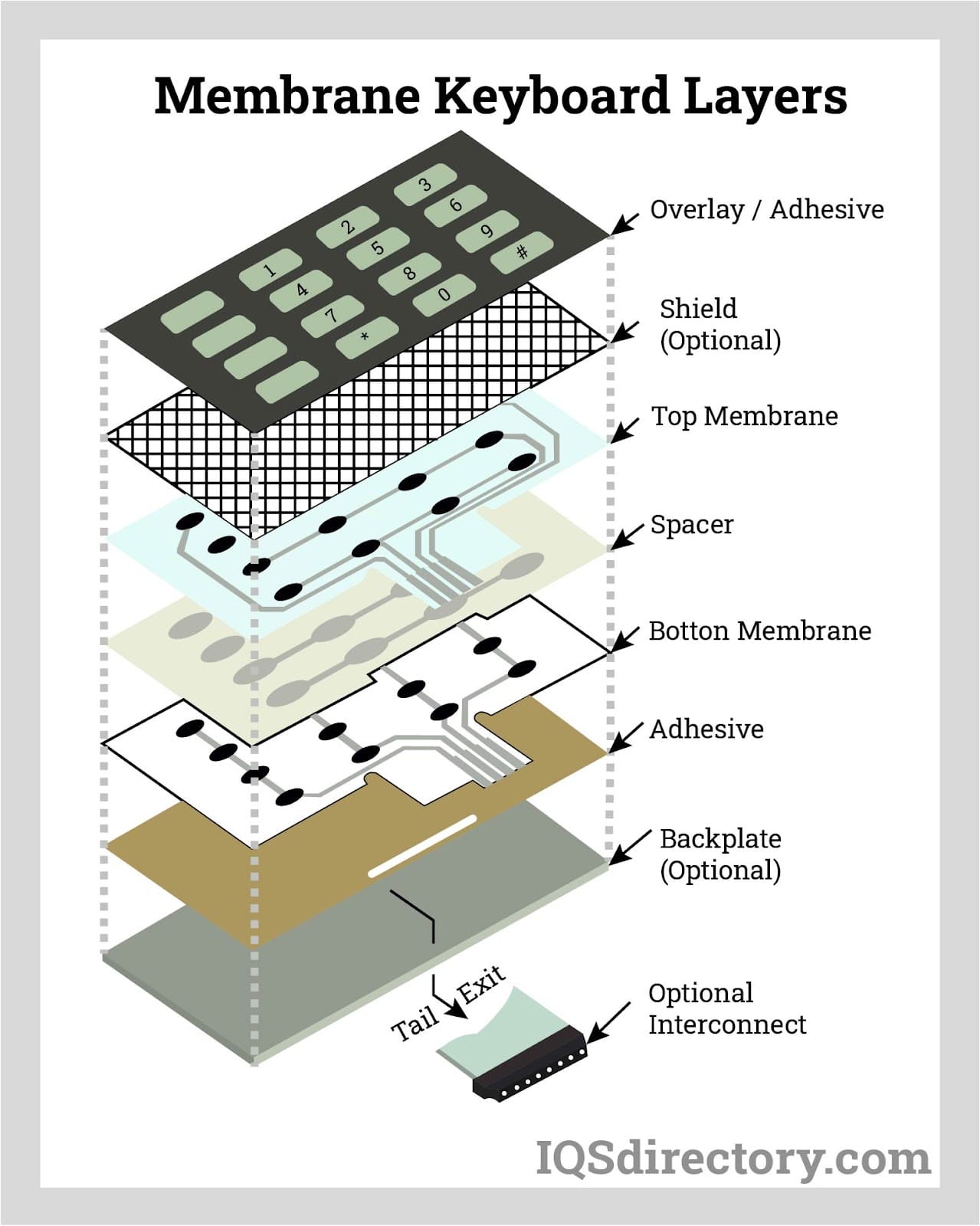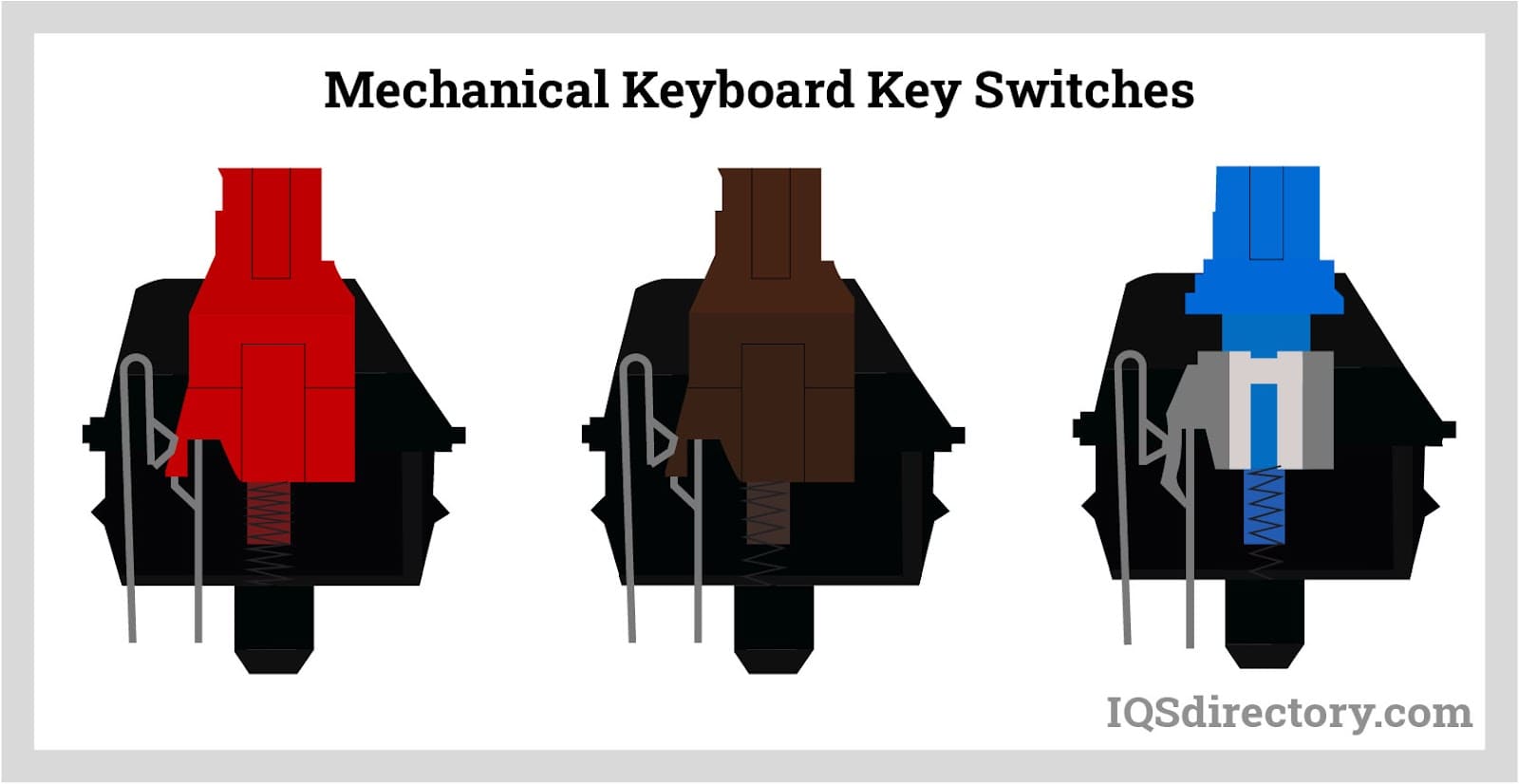Everything About Membrane layer Change: A Comprehensive Overview for Beginners
Membrane buttons are important components in modern electronic devices, providing an one-of-a-kind interface for individual communication - membrane switch. Their layered construction, including overlays and conductive traces, provides capability and longevity. Unlike conventional mechanical switches, membrane layer buttons offer a streamlined layout and personalized alternatives. Understanding their crucial attributes and advantages can change product layout. Nevertheless, the intricacies of their application and style considerations necessitate additional expedition
What Is a Membrane layer Change?
A membrane button is a kind of electric button that includes a flexible membrane layered over a published circuit board. This design permits for a compact and smooth user interface, usually made use of in numerous electronic gadgets. Membrane layer buttons are frequently found in consumer appliances, clinical devices, and industrial equipment due to their sturdiness and resistance to ecological factors.The building and construction generally consists of numerous layers, such as visuals overlays and adhesive backing, which provide tactile responses and shield the wiring beneath. The operation of a membrane button is initiated when pressure is related to the surface, completing an electric circuit.These switches are valued for their adaptability, allowing personalized layouts and published graphics that accommodate certain interface. Their inconspicuous nature lowers space requirements, making them perfect for applications where typical switches might not fit. Generally, membrane buttons supply a practical and aesthetic service for contemporary electronic gadgets.
Trick Elements of Membrane Switches
Membrane layer changes make up a number of essential components that add to their functionality and performance. The leading layer, called the overlay, supplies the interface and is often printed with symbols or graphics. Beneath the overlay exists a spacer layer, which separates the conductive components and stops unintended activation. The following essential part is the visuals layer, which improves appearances and ensures the sturdiness of the design.Conductive traces, generally made from products like silver or carbon, are printed on the circuit layer. When pressure is related to the overlay, these traces enter call, completing the circuit. In addition, a support layer uses architectural support and can be made from products such as polyester or polycarbonate. With each other, these components produce a dependable, user-friendly interface appropriate for numerous applications, from family home appliances to commercial tools. Comprehending these elements is important for any individual curious about membrane button technology.
Just How Membrane Switches Over Job
Comprehending how membrane layer switches over function is vital for appreciating their extensive use in various gadgets. A membrane button runs via a collection of layers, including a graphic overlay, spacer, and a circuit layer. When pressure is applied to the overlay, it presses the spacer layer, permitting the circuit layer to make get in touch with and finish an electric circuit. This action sends a signal to the tool, motivating a reaction, such as activating a light or turning on a function.Membrane switches over can be created with numerous attributes, including responsive comments, backlighting, and customized graphics, boosting individual interaction. Their construction enables a closed style, shielding the interior elements from dust, wetness, and impurities. This resilience makes them ideal for varied applications, from customer electronics to industrial devices. In general, the simplicity and performance of membrane changes contribute to their appeal in contemporary technology.
Benefits of Membrane Layer Switches Mechanical Buttons
While mechanical buttons have actually long been a staple in several tools, membrane layer changes offer distinctive advantages that make them increasingly appealing. One considerable advantage is their slim profile, permitting more compact layouts and better adaptability in product advancement. Additionally, membrane layer switches over function an uniform surface, which boosts visual charm and simplifies cleansing, making them ideal for atmospheres where hygiene is critical.Another benefit is their resistance to dirt and wetness. Unlike mechanical switches, which can be endangered by ecological elements, membrane layer buttons give a closed interface that protects versus contaminants - membrane switch. Membrane buttons usually have a longer lifespan due to less moving components, resulting in improved durability and reliability.Cost-effectiveness is likewise a noteworthy advantage, as membrane buttons can be created in bulk with reduced manufacturing expenses. These factors incorporate to position membrane buttons as a useful choice to typical mechanical choices in numerous applications
Common Applications of Membrane Layer Switches Over
Membrane switches are article source extensively used in different fields, particularly in customer electronic devices and industrial control panels. In customer tools, they offer a smooth, straightforward interface, while in industrial setups, they enhance longevity and functionality. Comprehending these applications highlights the versatility and functionality of membrane layer buttons in modern technology.
Customer Electronics Tools
As customer electronic devices remain to develop, membrane layer buttons have actually come to be a popular selection for a range of tools as a result of their versatility and sleek style. These switches are frequently discovered in smart devices, tablet computers, and remotes, where space is limited and looks issue. Their reduced account and adjustable styles enable makers to develop user-friendly user interfaces that boost the total customer experience. Furthermore, membrane layer switches are commonly utilized in home appliances such as microwaves and coffee makers, offering intuitive control options while standing up to dampness and dust. The toughness and dependability of membrane switches make them ideal for daily consumer products, making certain long life and constant performance. On the whole, their assimilation in consumer electronics mirrors a blend of functionality and modern-day style.
Industrial Control Panels
The applications of membrane switches over prolong beyond customer electronics, discovering substantial use in industrial control board. These buttons are preferred for their longevity and resistance to rough settings, making them suitable for manufacturing and process control settings. They offer a reputable interface for operators to manage machinery, screen procedures, and change setups. Membrane layer switches can be customized to fit particular functional needs, integrating functions like backlighting and responsive comments, enhancing customer experience. Their inconspicuous design enables for integration right into various equipment, while their capacity to hold up against spills, Discover More Here dust, and extreme temperature levels assurances long life. Generally, membrane layer buttons contribute to efficient and safe operation in industrial applications, showing their adaptability and performance popular atmospheres.
Considerations for Creating Membrane Switches Over
When developing membrane layer switches, picking the ideal products is important to ensure durability and capability. In addition, recognizing layer arrangement strategies can considerably influence the switch's efficiency and user experience. These considerations play a vital role in developing dependable and effective membrane layer switch designs.
Material Option Value
Product choice plays an important function in the design and functionality of membrane layer switches. The selected materials straight affect the switch's sturdiness, tactile response, and overall visual. Trick considerations consist of the substratum, which have to supply architectural stability while enabling for adaptability, and the visuals overlay, which requires to be resistant to use and environmental aspects. Conductive products need to assure reliable electrical efficiency, while adhesives have to supply solid bonding without endangering the switch's operation. Furthermore, compatibility with manufacturing processes and end-user settings is crucial; products need to withstand varying temperature levels, moisture levels, and chemical direct exposure. Eventually, suitable product selection not only boosts the membrane button's performance however additionally adds to its durability and individual fulfillment, making it an important facet of the style process.

Layer Arrangement Strategies

Regularly Asked Questions
For How Long Do Membrane Switches Usually Last?
Membrane layer buttons usually have a life expectancy of 1 to 5 million cycles, relying on usage and ecological problems. Factors such as design top quality and operating regularity considerably influence their sturdiness and general performance long life.

Can Membrane Layer Switches Be Custom-made for Certain Designs?
Membrane layer switches can certainly be customized to fit particular layouts, enabling diverse shapes, shades, and capabilities. This convenience makes it possible for makers to more tailor these buttons to fulfill distinct visual and functional requirements successfully.
What Materials Are Made Use Of in Membrane Change Construction?
Membrane switches are commonly constructed making use of products such as polyester, polycarbonate, and sticky layers. These materials give resilience, adaptability, and resistance to ecological aspects, guaranteeing the buttons function successfully in various applications and conditions.
Are Membrane Switches Over Resistant or waterproof to Dampness?
Membrane layer buttons can be created to be moisture-resistant, utilizing specialized finishings and products. Nevertheless, their water-proof abilities depend on building and construction high quality and certain applications, making it vital to analyze demands for perfect performance in various environments.
Just How Are Membrane Switches Fixed if Damaged?
Fixing damaged membrane layer switches typically involves replacing the impacted layer or circuit. Service technicians might likewise apply conductive glue or make use of specialized fixing kits, guaranteeing functionality is brought back without complete replacement of the whole button assembly. Unlike standard mechanical buttons, membrane layer buttons present a sleek design and personalized choices. A membrane layer switch is a type of electric switch that consists of an adaptable membrane layer layered over a printed circuit board. The operation of a membrane button is started when pressure is used to the surface, completing an electric circuit.These buttons are valued for their adaptability, making it possible for custom layouts and published graphics that cater to details customer interfaces. While mechanical switches have long been a staple in numerous devices, membrane layer switches over deal distinctive advantages that make them significantly appealing. Membrane layer switches usually have a longer lifespan due to fewer moving parts, resulting in enhanced toughness and reliability.Cost-effectiveness is also a remarkable benefit, as membrane layer switches can be created in mass with lower production costs.